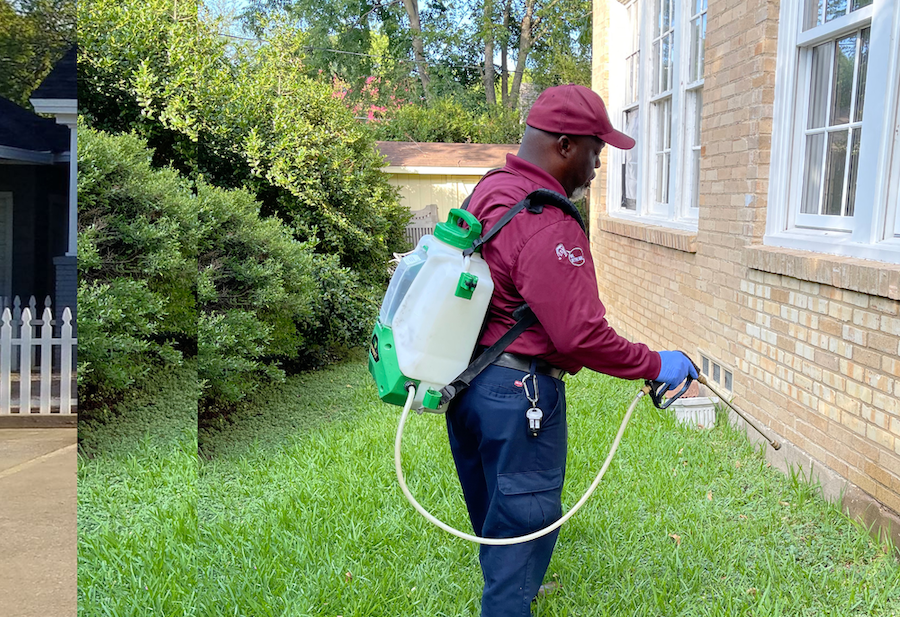Bed Pest Treatment Failure: Contrasting Chemical Vs. Non-Chemical Solutions
In the realm of pest control, particularly when taking care of the persistent problem of bed insects, the selection in between chemical and non-chemical therapy services can be a pivotal one. Both methods offer distinct benefits and disadvantages, influencing aspects such as effectiveness, safety considerations, and general price. By examining the nuanced details of each technique, a more clear understanding of which path to seek in resolving a bed pest infestation can be obtained.
Efficiency of Chemical Therapies
Chemical therapies for bed pest infestations have actually been extensively acknowledged for their potent and rapid efficacy in getting rid of these pests. When taking into consideration the efficiency of chemical treatments, it is critical to recognize that they can offer a quick and detailed service to a bed bug problem. Specialist exterminators often rely upon pesticides to target bed pests at numerous stages of their life process, including grownups, eggs, and fairies. These chemicals commonly function by interrupting the bed insects' nerve system, leading to paralysis and ultimate death.
Furthermore, chemical treatments have the benefit of offering recurring results, indicating that they can remain to eliminate bed insects even after the initial application. This recurring action is specifically beneficial in combating any type of prospective re-infestations. In addition, the rapid activity of chemical therapies can bring alleviation to people dealing with severe bed pest infestations, allowing them to reclaim control of their living rooms quickly.
Safety Worry About Chemical Solutions
One vital aspect that requires cautious factor to consider when using chemical remedies for bed pest therapy is making sure the safety of passengers and the environment. Direct exposure to specific chemicals utilized in bed bug therapies can lead to respiratory system problems, skin inflammation, or other adverse responses, especially in individuals with pre-existing problems or sensitivities.
Additionally, the ecological influence of chemical options is an additional significant factor to consider. Some pesticides used in bed insect therapies might be dangerous to beneficial insects, wildlife, and environments if they leach into the dirt or water supply. It is necessary to make use of chemical therapies judiciously, following security guidelines, and taking into consideration much less hazardous options to mitigate these risks and ensure the risk-free and reliable management of bed bug infestations.
Advantages of Non-Chemical Methods
Taking into consideration the prospective safety and security worries and environmental effect related to chemical options for bed insect treatment, discovering non-chemical techniques offers a promising option with a number of distinctive benefits. Non-chemical methods supply a more secure option for families, specifically those with youngsters, pet dogs, or people delicate to severe chemicals. These approaches eliminate the dangers of direct exposure to poisonous substances, decreasing the possibility for negative health and wellness results. Moreover, non-chemical treatments are eco-friendly, as they do not add to air or water contamination, making them a sustainable choice for insect control.
Furthermore, non-chemical services can be efficient in targeting bed bugs, including hard-to-reach areas where chemical therapies might not permeate. Techniques such as warm treatment, vacuuming, steam cleansing, and mattress coverings give extensive elimination without the usage of unsafe chemicals. Moreover, non-chemical methods can be less turbulent, calling for marginal prep work and allowing for quicker reentry right into treated locations. On the whole, choosing non-chemical bed pest treatment techniques not only prioritizes safety and security and environmental management but likewise ensures comprehensive and reliable parasite control.
Limitations of Non-Chemical Treatments

Additionally, non-chemical treatments often call for several applications to accomplish superior pest control successful elimination. This can be lengthy and may not constantly ensure complete elimination of all bed bugs and their eggs, specifically in hard-to-reach or surprise places.
Furthermore, the success of non-chemical treatments heavily depends on proper execution and thoroughness, which can be challenging for individuals without expert know-how. Inadequate application of non-chemical techniques might cause incomplete obliteration, resulting in relentless infestations and the demand for extra treatments.
Therefore, while non-chemical therapies have their advantages, it is necessary to recognize these constraints and consider them when establishing the most reliable method for managing bed insect problems.
Price Contrast: Chemical Vs. Non-Chemical Options
Given the restrictions associated with non-chemical therapies, a crucial element to review in the context of bed insect management is the expense comparison in between chemical and non-chemical options. In why not look here comparison, non-chemical therapies like warmth therapy or steam can be much more costly, with prices ranging from $1,000 to $6,000 for a whole home. While the preliminary cost of chemical therapies might seem reduced, numerous treatments may be required to completely eradicate the infestation, potentially boosting the total cost.
Conclusion

Thinking about the possible safety issues and environmental my link effect linked with chemical services for bed pest therapy, checking out non-chemical techniques provides an appealing choice with a number of distinct advantages.Provided the constraints linked with non-chemical treatments, an important element to review in the context of bed pest monitoring is the cost contrast between chemical and non-chemical choices. In comparison, non-chemical treatments like warmth treatment or vapor can be a lot more costly, with prices ranging from $1,000 to $6,000 for a whole home. While the first expense of chemical therapies might seem reduced, several treatments might be required to completely remove the infestation, possibly enhancing the general expense.In final thought, when contrasting chemical and non-chemical bed insect treatment choices, it is crucial to think about performance, safety, advantages, constraints, and cost.